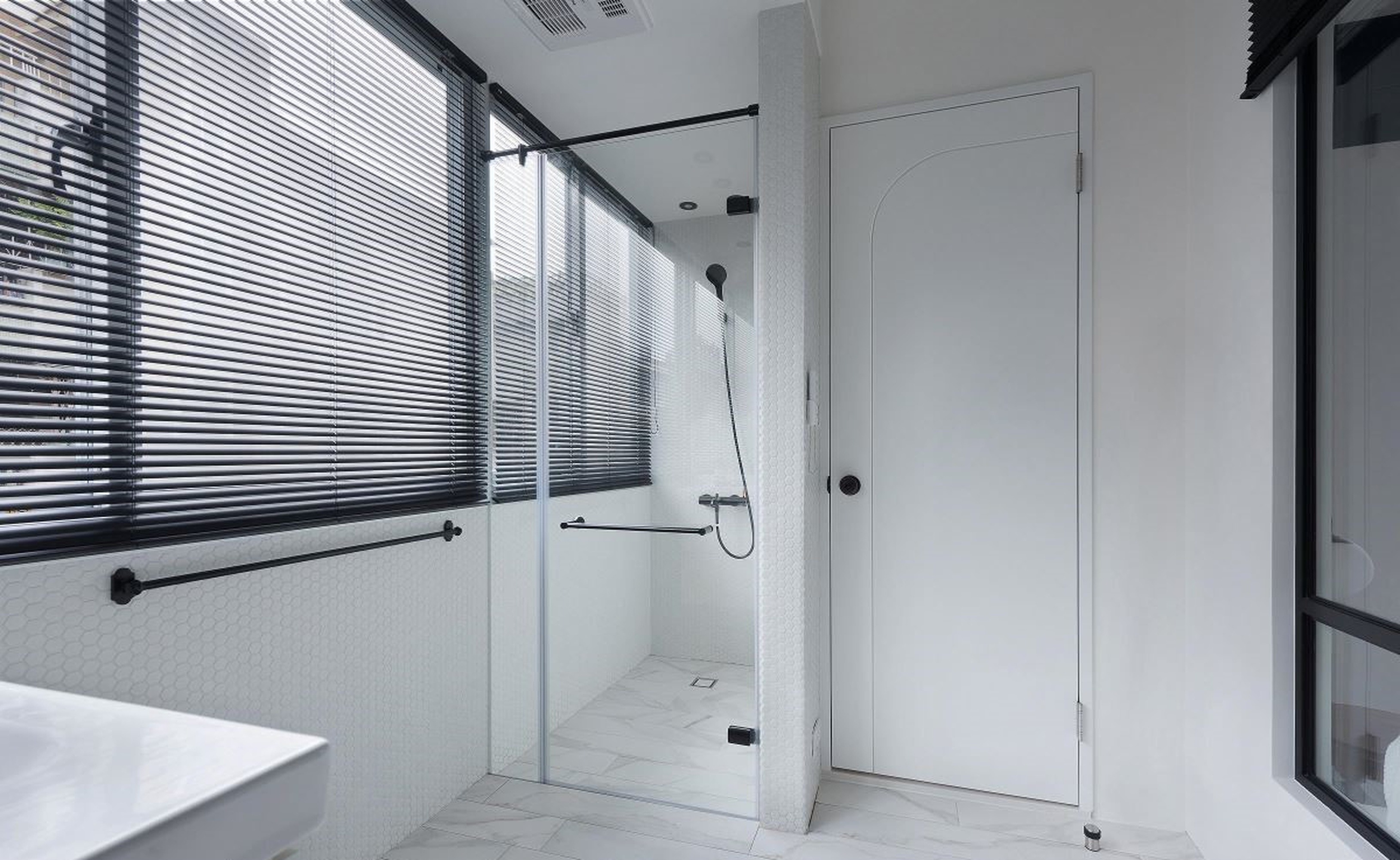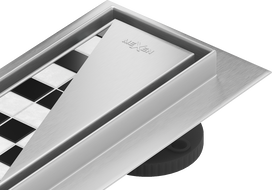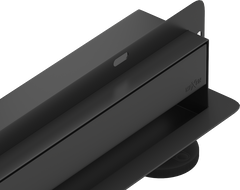
A linear drain or shower tray — it's a consideration for anyone planning a bathroom renovation. Each solution has its pros and cons. The decision should be made considering functionality, aesthetics, and technical aspects.
What will you learn from this article?
Choosing between a linear drain and a shower tray is not straightforward. Your bathroom should contain an aesthetic, practical, and functional solution. From this article, you will learn:
The advantages and disadvantages of both the shower tray and linear drain.
Whether it is possible to install a linear drain in every bathroom.
The types of shower trays available.
Installing a Shower Tray or Linear Drain?
When choosing the right bathroom fittings, the main aspect everyone considers is obviously the size of the bathroom. You might dream of a comfortable bathtub, perfect for relaxing after a long and tiring day — but the size of apartments in blocks often does not allow for this. That is why the choice often falls on shower enclosures. Until recently, they mainly included shower trays, but recently, Walk-in enclosures, allowing for the installation of a linear drain, have become increasingly popular.
The bathroom space in many homes and apartments is still enriched with shower enclosures with trays. You can also find such sets in our offer. Compared to the models available in the market a few years ago, these differ mainly by modern design, the availability of many shapes and sizes, capacity, and more materials to choose from.
Shower Tray — Classic Solution for Modern Bathrooms
Installing a shower tray in the bathroom has been a popular solution for years. Thanks to technological advancements, it does not require complicated procedures, so it is worth considering a shower tray in the bathroom. Modern models fit into contemporary bathroom arrangements and stand out for their high functionality.
Main advantages of a shower tray are:
Simple and quick installation — shower areas with a tray can be implemented in almost every bathroom, especially in those where a linear drain cannot be installed.
Lower installation costs — setting up a linear drain requires precise installation and complex plumbing work. This problem does not exist when you choose a shower tray.
Lower leakage risk — the traditional shower tray reduces the potential leakage risk from the floor. This is significant in older buildings.
A variety of shapes and materials to choose from — see which shape of a shower tray to choose to enjoy the perfect solution in your bathroom. Mexen offers acrylic trays, made of mineral composite, and SMC — synthetic material.
The most frequently mentioned disadvantages of a classic shower tray are:
Challenging cleaning — nooks and high edges require very thorough cleaning. For older people, cleaning can be challenging.
More space — due to the necessity of installing a cabin with a tray, more space is required in the room. The dimensions are strictly defined, which limits the design possibilities.
Less modern aesthetics — though modern trays look very good, they are still more bulky than a shower without a tray. User opinions are clear: a linear drain looks more modern.
A Low Tray is a Better Choice for Modern Bathrooms
A low shower tray is the best alternative to a linear drain. It has a height of up to 5 cm. It offers unlimited design possibilities due to being made from the best materials, such as acrylic, mineral composite, or SMC — synthetic material. Installation is quick and efficient, not requiring precise floor preparation or complicated construction work. Classic trays have a 2% slope, so they effectively drain water. Their installation is an economical choice.
What sets a Tile-In Shower Tray apart?
Another alternative to a linear drain is the tile-in shower tray. It offers an intermediate solution, to be installed under ceramic tiles. Thanks to the appropriate slope, it allows effective water drainage from the shower. It is a floor-mounted tray with a linear drain, factory-connected with a slope plate. The unique structure means that you don't have to decide on a tray or tiles in the shower. You have two solutions in one. The installation process is less complicated, allowing for a good, effective solution to be created in a short time.

Installing a Linear Drain is an Investment in Modernity and Minimalism
A floor drain is an increasingly popular solution that is a key element of modern bathroom equipment. The system enables the creation of a uniform surface throughout the room and a threshold-free shower entrance. Not having a tray comes with many advantages but also some disadvantages.
The advantages of a linear drain are:
Modern look — a shower cabin without a tray appears more spacious and elegant.
Threshold-free entrance — ideally suited to the needs of the elderly, children, and people with reduced mobility.
Easy to keep clean — in a tray, you need to clean the entire surface thoroughly, paying attention to corners. A linear drain mainly requires regular maintenance.
Great design freedom — the popularity of the linear drain increased due to the possibility of using various types of tiles, mosaics, and natural stone in the shower. The project is more interesting and tailored to your preferences.
Attractive design and installation method — linear drains are available in various finishes. They differ, among others, in color. Both floor and wall installation methods are popular.
The disadvantages of a linear drain are:
More expensive investment — a shower tray with a drain is cheaper to install than a modern linear drain.
Required thickness of the floor and ceiling — in the case of thin ceilings in old buildings, a bathroom with a floor drain wouldn't be feasible. It requires an appropriate recess and elevation of the floor level.
Risk of flooding — challenges in installing a linear drain mean that incorrect execution can lead to water spilling onto the floor, and thus flooding the bathroom.
Can a Linear Drain Be Used in Every Bathroom?
Linear drains work excellently in modern bathrooms when comfort and convenience are the aim. Just a few years ago, such drains were rarely seen — deep acrylic trays reigned in Polish bathrooms. Currently, low trays are in vogue.
Whether a linear drain can be installed in your bathroom depends on the ceiling thickness. Even at the house construction stage, it is worth designing a floor with a thickness of 10-15 cm. Find out how to install a linear drain, ensuring it operates effectively. You should also opt for a skilled professional who will ensure precise execution of all tasks. Correct floor profiling is crucial for achieving the right slope. Otherwise, such an arrangement risks flooding the bathroom. You must also remember that a linear drain is a more expensive solution than a tray. However, if you decide on a bathroom with a linear drain, do not economize on elements included in the shower area. Check out how to install a shower without a tray.
What to Choose: Linear Drain or Shower Tray?
A bathroom with a shower with a linear drain or a low tray — opinions on both solutions are both positive and negative. To make a final decision, answer the following questions:
Who will be using the bathroom — the elderly and individuals with reduced mobility should choose a cabin with a linear drain. For families with children, a deep tray works well, as it can accommodate a bath for a child. Parents with older children could comfortably opt for a shower with a linear drain.
What are your aesthetic preferences — if you value an exceptional, modern bathroom design — opt for a Walk-in shower with a linear drain. It offers much more options for designing a truly unique bathroom.
How do you heat the bathroom — if you decide on underfloor heating, you might need to choose a low tray or a wall linear drain.
There are many variables influencing the choice of the right solution — it's worth carefully considering the purchase, especially when setting up a new bathroom, but also during its thorough renovation.




















